Bill D. (VA)
Silver Member
- Joined
- Oct 7, 2008
- Messages
- 4,711
- Reaction score
- 6,212
- Golden Thread
- 6
- Location
- SE Virginia
- 🥇 Banner finds
- 6
- 🏆 Honorable Mentions:
- 2
- Detector(s) used
- F75 SE (land); CZ-21 (saltwater)
- Primary Interest:
- Other
My hunting buddy Dan had been saddled with an ugly virus for most of last week, but had recovered enough to finally get back out for a half day yesterday. We decided to return to the new site we had secured permission for the prior weekend. This is a 1630s land patent that we've had our eyes on for quite some time, and on our first trip there we discovered we had some bonus territory to hunt thanks to recent logging activity. It was obvious where the original home stood as you can see in one of the pics below, and iron was scattered over a fairly wide area around the house site. But due to the logging debris we're only going to be able to put our coils on maybe 25% of the site which is a real shame as I feel a couple hammered silvers are hiding there as well as a trash pit or two. We hunted there a bit, and spent some time walking the expansive property, but our finds weren't anything to brag about. However, I was able to recover part of a mid-1600s trapezoidal buckle along with a couple of early buttons, 2 musketballs, and this heavy, octagonal brass piece with 2 slots. Not sure what that is. Both of us eyeballed more very early pipe stems as you can tell from their large bores. We then ventured out into the adjacent field to check a couple of interesting spots and to give it a general walk-thru as we usually do. Dan stumbled upon a bit of iron in an unsuspecting area that produced a few colonial buttons and relics. We also made it back to the nearby knoll where we discovered a 19th century house site on the last hunt that produced quite a few finds including that Petersburg merchant token I recovered. We ended the day walking a large adjacent field as well as a small, hidden one that looked very promising, but we struck out on both. We still plan to return to this property, but are refocusing our efforts now on getting into some new sites.
Also, back on Saturday, I hooked up with my old friend Stan to dig in the huge early colonial pit we've been digging in for years. Unfortunately the bottle seals evaded us this time, but Stan did manage to dig 5 pipe bowls from his spot, and 3 of them were of the reddish-brown variety (domestically produced). One with some rim decoration is shown below. My effort didn't produce much more than a bunch of black glass spouts, mostly mallet but a couple of onions too, some period pottery, and about 30 pipe stems. Not the best day, but it's always a blast digging at this historic location as some incredible finds have been unearthed here. But there's always next time ....
Also, back on Saturday, I hooked up with my old friend Stan to dig in the huge early colonial pit we've been digging in for years. Unfortunately the bottle seals evaded us this time, but Stan did manage to dig 5 pipe bowls from his spot, and 3 of them were of the reddish-brown variety (domestically produced). One with some rim decoration is shown below. My effort didn't produce much more than a bunch of black glass spouts, mostly mallet but a couple of onions too, some period pottery, and about 30 pipe stems. Not the best day, but it's always a blast digging at this historic location as some incredible finds have been unearthed here. But there's always next time ....
Amazon Forum Fav 👍
Attachments
-
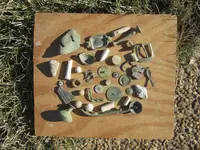 011915a.webp210.8 KB · Views: 211
011915a.webp210.8 KB · Views: 211 -
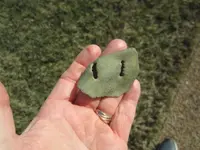 011915b.webp74.6 KB · Views: 172
011915b.webp74.6 KB · Views: 172 -
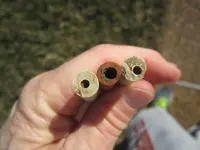 011915c.webp41.5 KB · Views: 177
011915c.webp41.5 KB · Views: 177 -
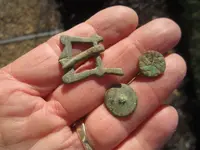 011915d.webp85.9 KB · Views: 170
011915d.webp85.9 KB · Views: 170 -
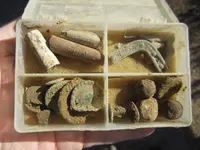 011915e.webp134.3 KB · Views: 178
011915e.webp134.3 KB · Views: 178 -
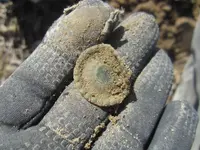 011915f.webp219.1 KB · Views: 173
011915f.webp219.1 KB · Views: 173 -
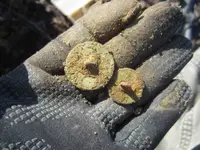 011915g.webp208.1 KB · Views: 154
011915g.webp208.1 KB · Views: 154 -
 011915h.webp178.6 KB · Views: 170
011915h.webp178.6 KB · Views: 170 -
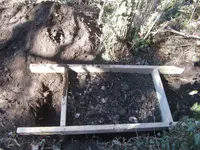 011715a.webp256.4 KB · Views: 152
011715a.webp256.4 KB · Views: 152 -
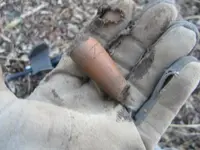 011715b.webp66.9 KB · Views: 164
011715b.webp66.9 KB · Views: 164 -
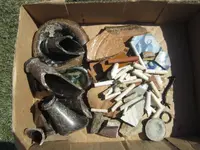 011715c.webp142.8 KB · Views: 170
011715c.webp142.8 KB · Views: 170
Upvote
17




 !
!